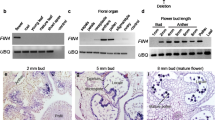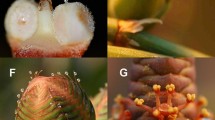Abstract.
The plant reproductive process of pollination involves a series of interactions between the male gametophyte (the pollen grain or pollen tube) and extracellular matrix (ECM) molecules secreted by different cell types along the pollen tube growth pathway in the female organ, the pistil. These interactions are believed to signal and regulate the pollen tube growth process to effect successful delivery of the sperm cells to the ovules where fertilization takes place. Hydroxyproline-rich glycoproteins secreted by plant cells are believed to play a broad range of functions, ranging from providing structural integrity to mediating cell-cell interactions and communication. The pistil and pollen tube ECM is enriched in these highly glycosylated proteins. Our discussions here will focus on a number of these proteins for which most information has been available, from Nicotiana tabacum, its self-incompatible relative N. alata, and Zea mays. In addition, the regulation of the synthesis and glyco-modification of one of these proteins, TTS (transmitting tissue-specific) protein from N. tabacum will be discussed in the light of how differential glycosylation may be used to regulate molecular interactions within the ECM.
Similar content being viewed by others
Author information
Authors and Affiliations
Additional information
Rights and permissions
About this article
Cite this article
Wu, H., de Graaf, B., Mariani, C. et al. Hydroxyproline-rich glycoproteins in plant reproductive tissues: structure, functions and regulation. CMLS, Cell. Mol. Life Sci. 58, 1418–1429 (2001). https://doi.org/10.1007/PL00000785
Issue Date:
DOI: https://doi.org/10.1007/PL00000785




